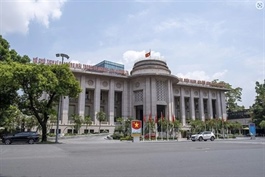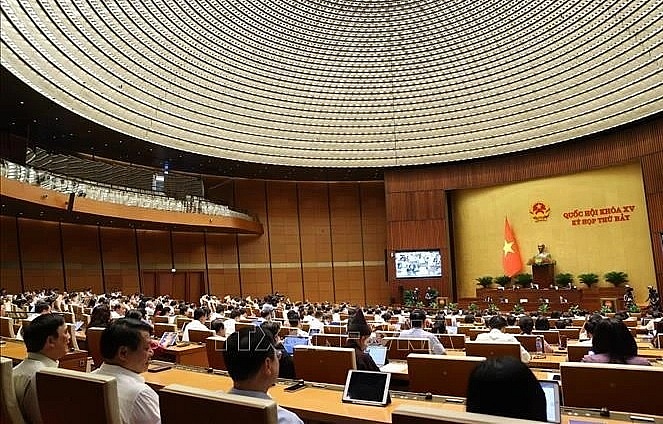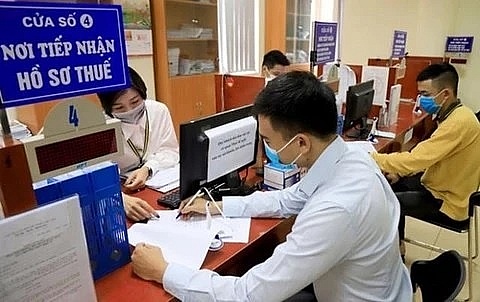Green outstanding loans reached over VNĐ636.96 trillion at end of Q1
Green outstanding loans reached over VNĐ636.96 trillion at end of Q1
Green outstanding loans reached more than VNĐ636.96 trillion at the end of the first quarter this year, accounting for about 4.5 per cent of the total outstanding loans in the banking system, deputy governor of the State Bank of Vietnam (SBV) Đào Minh Tú said on May 22.

Deputy Governor of the State Bank of Vietnam Đào Minh Tú speaks at the event. Photo sbv.gov.vn |
At the launch ceremony of Environmental, Social and Governance (ESG) Việt Nam Forum held in Hà Nội, Tú said ESG outstanding loans of the banking system had grown steadily over the years, reaching about VNĐ2.9 quadrillion by the end of the first quarter this year, accounting for more than 21 per cent of the total.
According to Tú, green growth and sustainable development is a path every country is now following. Việt Nam is one of the countries facing many environmental and social problems and has been heavily affected by climate change, which has negatively impacted economic development and people's lives. Therefore, Việt Nam has actively participated in implementing international commitments on green transformation and greenhouse gas emission reduction to minimise the impact of climate change.
As an important financial supply channel of the economy, the banking industry has a responsibility to keep capital flows green, to achieve sustainable development goals, including the requirements on applying environmental, social and governance criteria, to contribute to achieving sustainable development goals.
Based on the SBV’s regulations, many credit institutions have proactively cooperated and received green capital sources and technical support from international financial organisations to develop internal regulations on implementing environmental and social risk management for granting credit to customers, according to Tú.
Tú said the SBV would continue to research and complete the legal framework to strengthen the management of environmental, social and climate risks for credit institutions. It will also monitor, guide and remove difficulties for credit institutions in implementing environmental risk management according to regulations in Circular No. 17/2022/TT-NHNN on environmental risk management guidelines in loan granting of credit institutions.
The SBV would also direct credit institutions to focus resources on financing green economic sectors and economic model projects that contribute to the national and low emission growth model.
Ngô Bình Nguyên, OCB’s strategy director, said to achieve green goals, banks must develop green customer loan portfolios. Banks’ operations at all branches and transaction offices must also achieve energy savings, while directors, the executive board and staff of OCB had agreed to join in a concerted effort to achieve those goals.
OCB would offer consulting and support solutions for customers with green projects, such as environmentally-aware construction, wind and solar energy and logistics, Nguyên said, adding that it had plans to build a digital platform for early ESG assessment.
Nguyên said when accessing green loans, enterprises must have a specific early plan, for example, for real estate projects, from the bidding and design stages, they must incorporate best ESG practice, which would help the projects to be effective in both the short and long term.

























